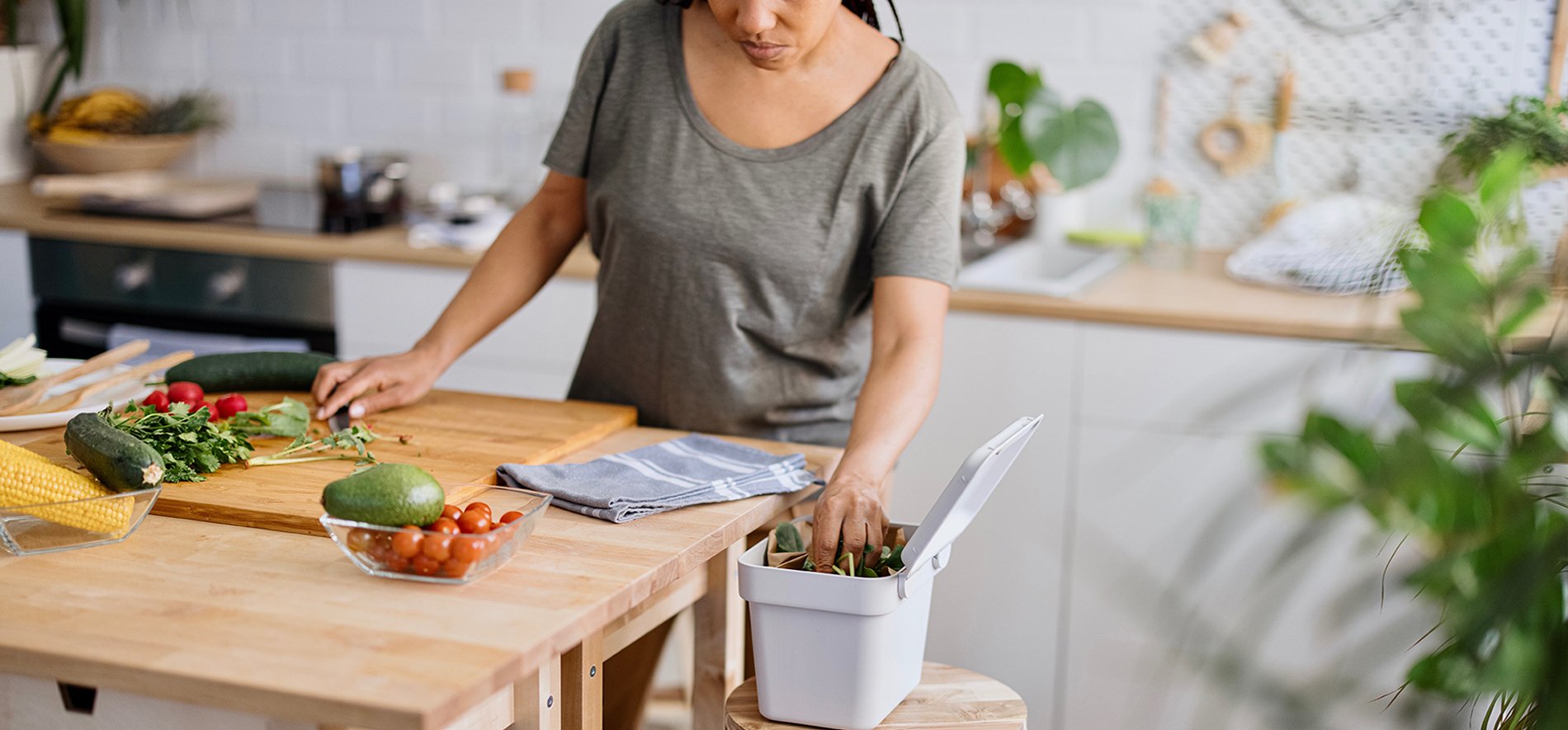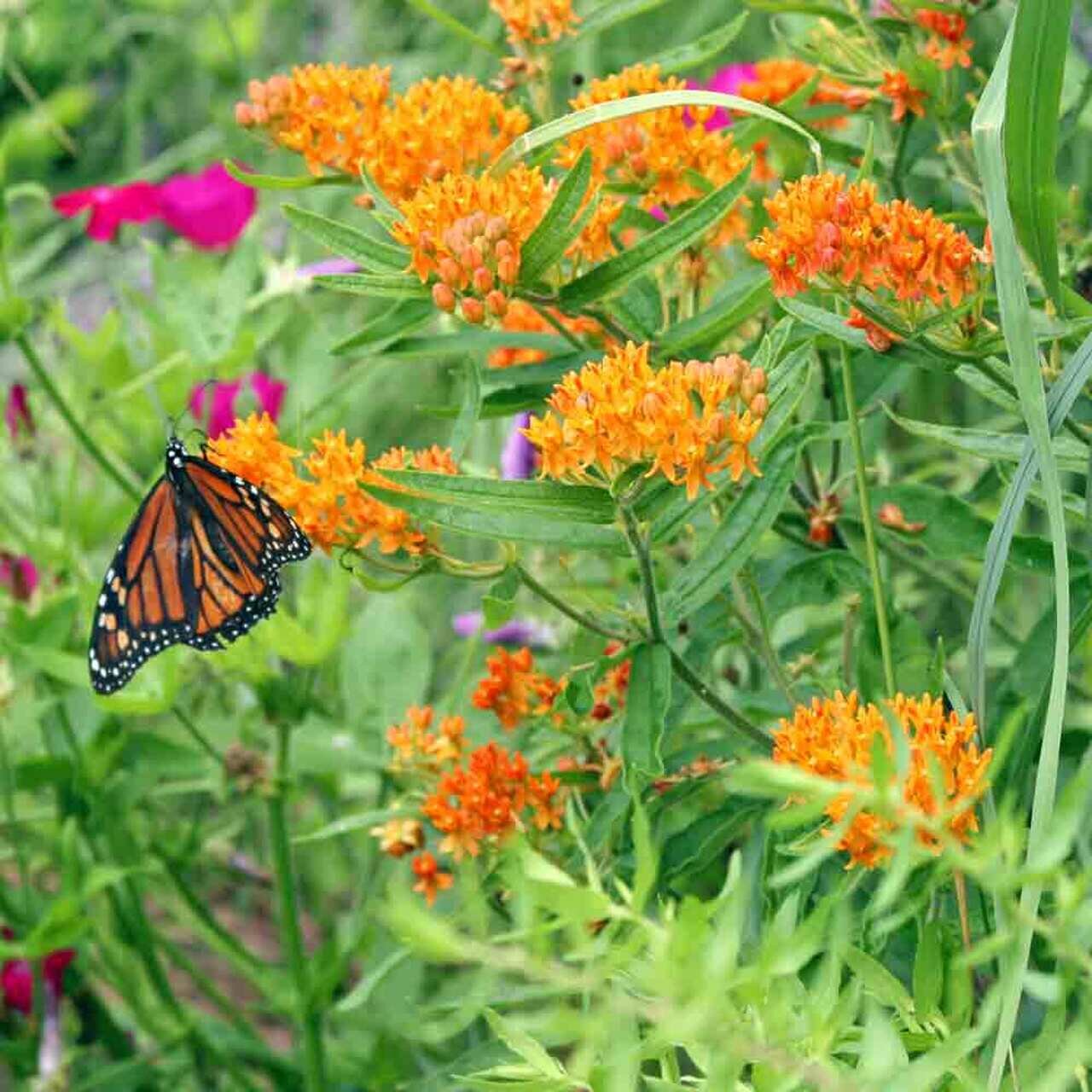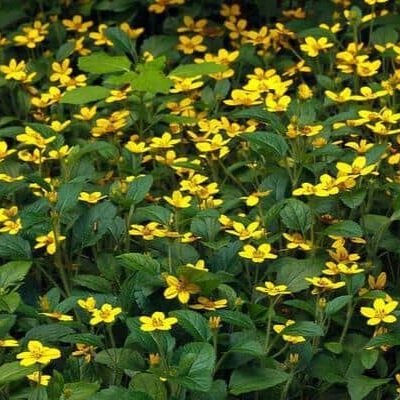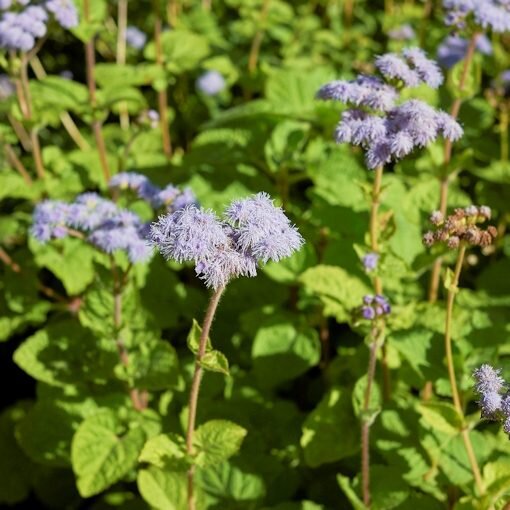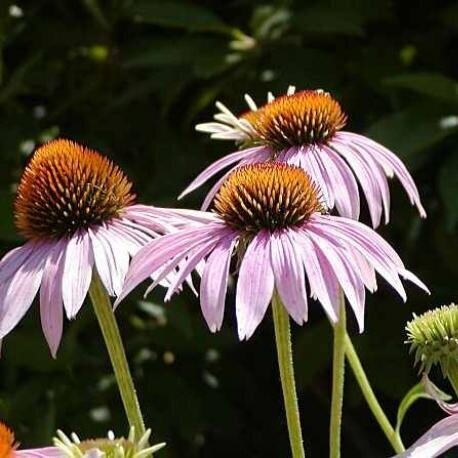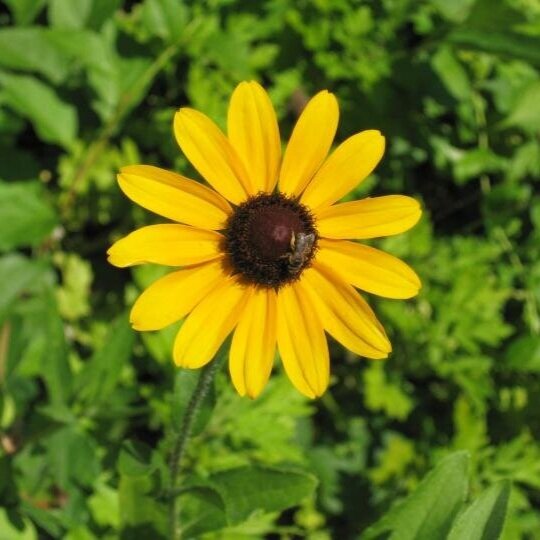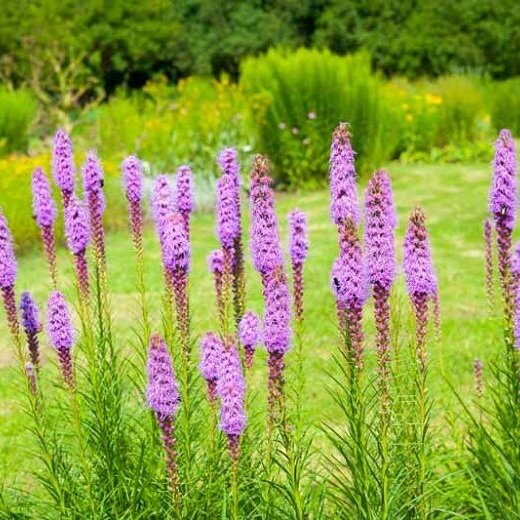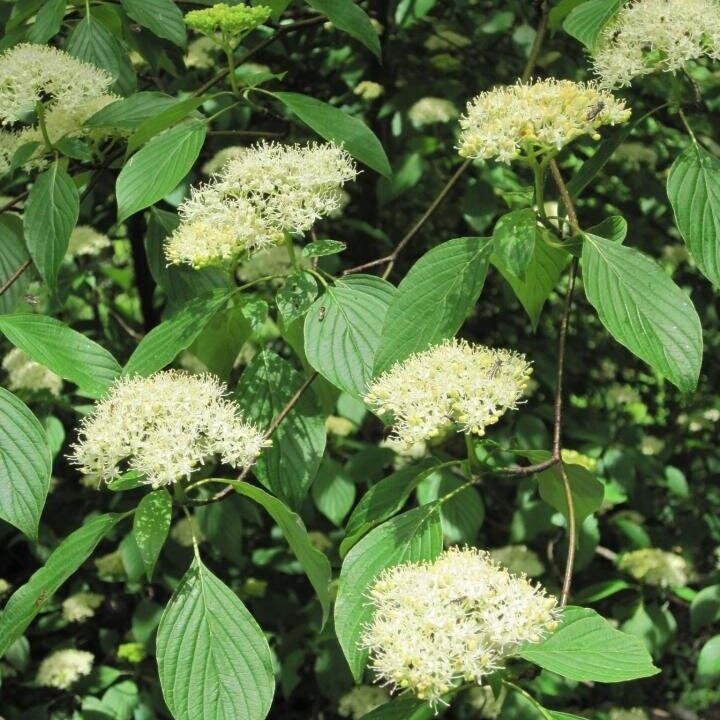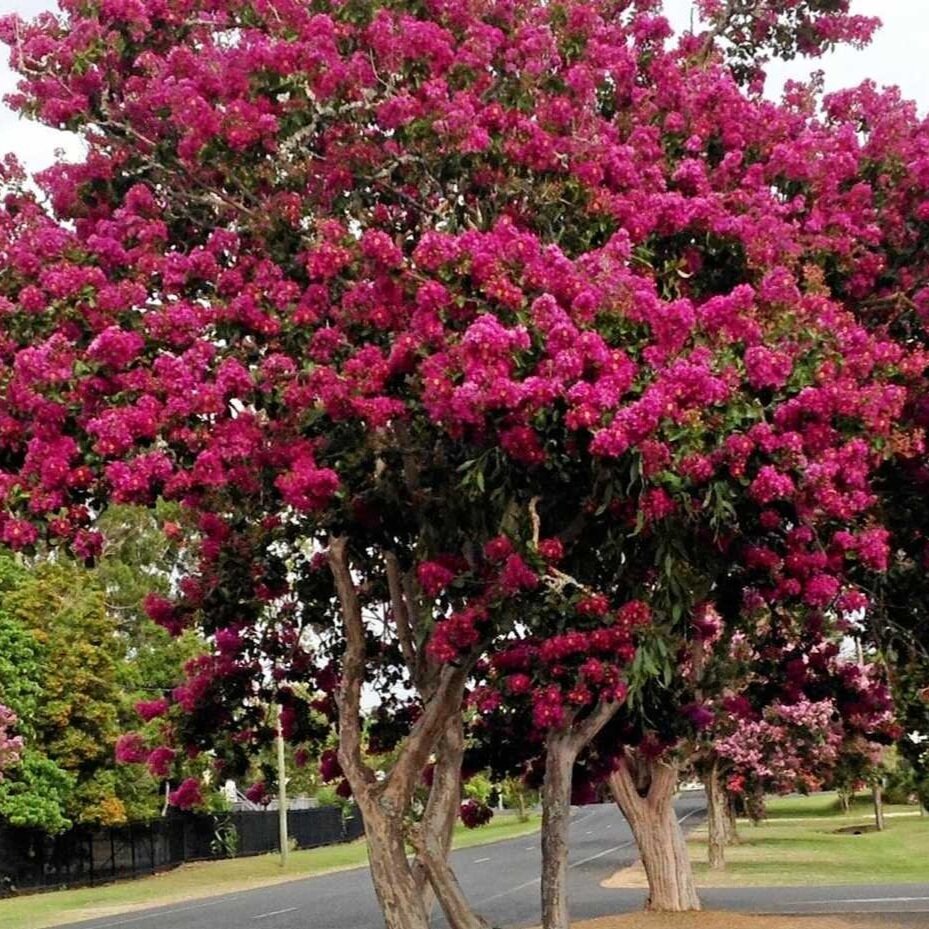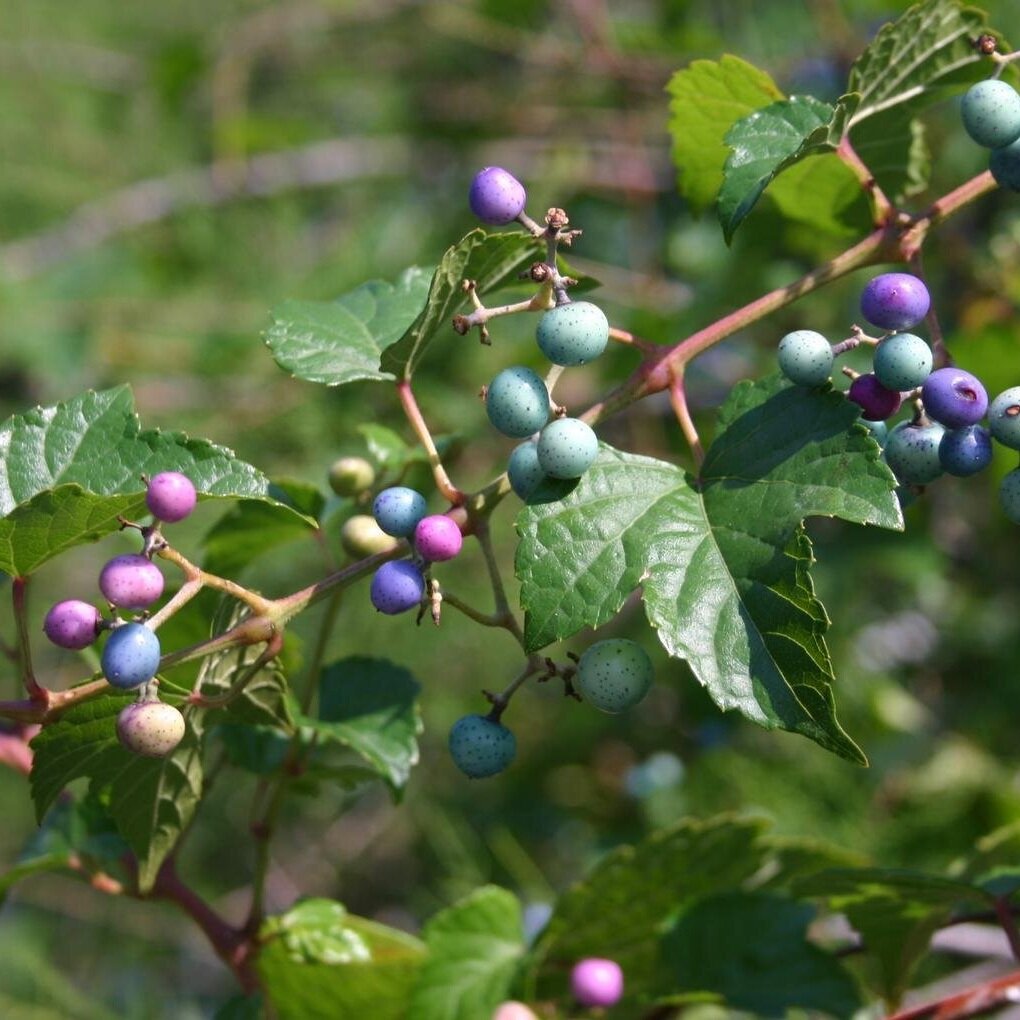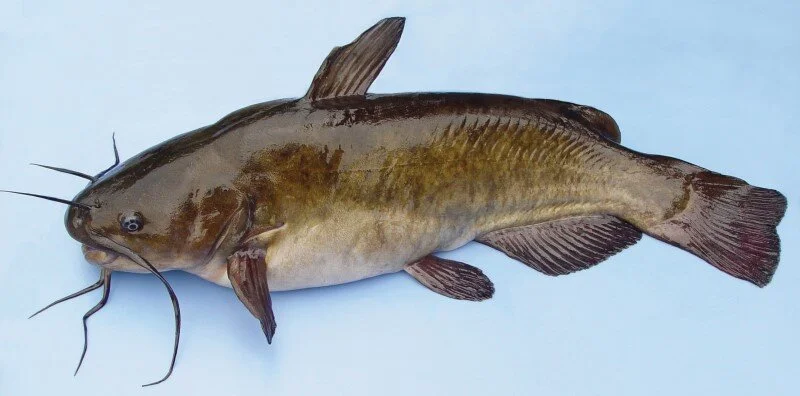
BLOG
10 Things You Can Do to Be a Responsible Pet Owner in Prince George’s County
Owning a dog or a cat is a great experience, but it’s a big responsibility for you and your community. These 10 rules of pet ownership don’t cover everything, but are essential for keeping you, your pet, and our County safe and happy!
1. License and Microchip Your Pet
Every pet owner has the same nightmare: their pet escaping. Licensing your pet helps us keep track of pet populations, ensures your pet is vaccinated for public safety, and makes it easier to reunite you with your pet if they get lost. We also recommend microchipping, a permanent form of identification that greatly increases the chances of finding your pet if they go missing.
Learn more about licensing your pet here, and talk to your vet about microchipping.
2. Keep Their Vaccinations Up to Date
Routine vaccinations protect your pet and our County from diseases that can spread quickly. Regular veterinary visits ensure your pet receives the necessary shots, and can save you money in the long run, as vaccines prevent costly illnesses like feline leukemia, bordetella, FIV, parvo, and others—or worse, untreatable fatal diseases like rabies.
Some organizations offer low-cost vaccination services. Check out our list here.
3. Spay or Neuter Your Pet
Our shelters are at maximum capacity. Spaying or neutering your pet helps prevent overpopulation and reduces the number of unwanted animals in shelters. This common procedure also has health benefits for your pet, including preventing cancers and infections, and can reduce behavioral issues.
Spaying and neutering can be expensive. Check out our list of affordable or free options.
4. Provide Regular Veterinary Care
Regular veterinary check-ups are crucial for detecting health issues early and maintaining your pet’s overall health. Our local veterinarians will ensure your pet receives routine examinations, dental care, and any necessary treatments.
5. Train and Socialize Your Pet
Good training and socializing are important for your pet’s well-being and safety, as well as the safety of those around them. Training helps prevent behavioral problems and enhances the bond between you and your pet. Socialization exposes your pet to different environments, people, and other animals, which helps reduce anxiety and aggression.
Many local businesses and pet stores offer training classes. Or, you can always check out the wealth of information on YouTube. We also offer pet parenting classes for free!
6. Get Exercise and Mental Stimulation
Prince George’s County has over 28,000 acres of parkland for you and your pets to enjoy. (Remember to keep your pets leashed!) Regular exercise is important for your pet’s physical health and mental well-being. Daily walks, playtime, and interactive toys keep your pet active and engaged. A bored, antsy pet can become destructive, loud, and even dangerous.
If your dog is well socialized and loves playing with other dogs, try out one of these dog parks!
7. Feed a Balanced Diet
A nutritious diet is fundamental to your pet’s health. Talk to your veterinarian about what food brands are best for your pet’s breed and size, along with options that fit your budget.
If you are struggling to make ends meet, we have a list of pet food pantries to assist.
8. Pick Up After Your Pet
Not picking up and discarding your pet’s feces contaminates our water, spreads disease, and can even become a serious public health hazard. We ask that everyone, regardless of where they are, bag and toss their pet's waste.
9. Ensure Safe and Comfortable Living Conditions
Your pet needs a safe and comfortable environment to thrive. Clean water and a temperate area are very important. Your pets must be indoors during summer heat and freezing temperatures. Remember some pet breeds, particularly dog breeds, are more susceptible to heat and cold than others.
10. Follow Local Animal Control Laws
Adhering to local animal control laws ensures the safety and well-being of your pet and the community. This includes obeying leash laws, noise ordinances, and anti-cruelty regulations. Familiarize yourself with the rules in your area and comply with them to avoid fines and legal issues.
If you know of someone breaking laws, please report it to Animal Services for the safety of the animal and the people around it. We all must be reporters of animal abuse and neglect.
Want to learn more? Prince George’s County offers pet parenting classes! Do you love animals and want to make a difference? Volunteer at Animal Services and help give our adoptees loving, happy homes.
Prince George’s County Wants You to Bag It Right!
Prince George’s County has always been a leader in green technology and adaptation, as well as a supporter of the state of Maryland’s goal of 85% waste diversion by the year 2040. Our next move for a greener, cleaner Prince George’s County is ditching plastic bags with the Better Bag Bill.
What is the Better Bag Bill?
Prince George’s County prohibits all retail establishments from providing plastic carryout bags to shoppers. Instead, shoppers must pay a fee for paper carryout bags and reusable bags. Shoppers can bring their own reusable bags or containers (such as cardboard boxes) to avoid the fee.
Businesses will be required to provide paper bags, and if they offer reusable bags, they must charge a minimum of 10 cents per bag. Reusable bags are defined as stitched, handled bags specifically designed and manufactured for multiple reuses, and is made of cloth or other washable fabric, or a durable material suitable for reuse that is NOT made of plastic film.
When does the Bill take effect?
The Better Bag Bill started January 1, 2024, with a three-month grace period to give shoppers and businesses time to adjust before enforcement begins.
Why limit the use of plastic bags?
There are many reasons Prince George’s County is saying no to plastic:
Plastic bags are not recyclable and improper disposal causes wear and tear on our recycling facilities, incurring unnecessary costs for taxpayers.
The environmental impact of plastic bags is alarming—it takes a staggering 1,000 years for them to decompose in landfills. Even then, they break down into microplastics that contaminate our food, water, and soil, posing a long-lasting threat to our ecosystem.
Plastic bags are deadly for wildlife.
Plastic bags are one of the most common types of litter and cleaning them up from our parks, roads, and waterways costs County taxpayers.
The Better Bag Bill aims to address these issues by encouraging County businesses and shoppers to move toward a more sustainable alternative.
Who will be affected?
Any and all shoppers and businesses—not just grocery stores—in Prince George’s County! Shoppers will no longer be offered plastic bags or free paper bags. Businesses will be expected to provide alternatives. There are some exemptions:
Plastic bags can still be provided to:
Package bulk items, including fruit, vegetables, nuts, grains, candy, or small hardware items.
Wrap frozen foods, meat, or fish, whether prepackaged or not.
Wrap flowers, potted plants, or other damp items.
Contain unwrapped prepared foods or bakery goods.
Protect or contain garments or dry-cleaned clothes; protect suits, dresses, and formalwear.
Take live fish, insects, mollusks, or crustaceans away from a retail store.
Paper bag fees will be waived for:
Paper bags containing prescription drugs.
Paper bags containing prepared food provided at the drive-through window of a restaurant.
Paper bags provided by a full-service restaurant after a meal for leftovers.
How will the bill be enforced?
The Department of the Environment will oversee the enforcement. Businesses not complying with the bill are subject to a civil penalty not exceeding $500. Shoppers will not have to worry about penalties but will have to pay if they choose to get paper bags at the store instead of bringing their own.
Bringing your own reusable bags is a small habit that makes a big impact, and will soon save you money. Here are some practical tips for bagging it right:
Leave a few reusable bags in your car, so you’ll have them whenever you are out and about.
Store your reusable bags by the door, near your car keys, or with your store coupons.
Look for lightweight, foldable reusable bags that can be kept in a purse or work bag, or even stored at work.
Don’t forget to wash your bags!
Together, we can make a big difference in our County and our environment. All it takes is a small change! To learn more, visit mypgc.us/bagitright.
An Open Letter from Prince George’s County Department of the Environment Director Andrea Crooms
Dear Prince Georgians,
Did you know that approximately 1.3 billion tons of food are wasted each year globally? Discarded food is dumped into landfills, releasing greenhouse gas as it slowly rots away. According to the U.S. Environmental Protection Agency, food is the largest category of material placed in municipal landfills in the United States. Food waste emits methane, a powerful greenhouse gas contributing to climate change. Instead of nourishing us, our landfilled food contributes to air and water pollution.
In Prince George’s County, almost 34% of what is being disposed of at the County’s landfill is compostable, with food and food-soiled products making up the largest portion of the materials. That’s one-third of our landfill filled with valuable materials left to pollute our environment.
I want better for our County. Don’t you?
Prince George’s County is a national leader in being green. And now, with our curbside composting program, we are setting the standard for environmentally smart and friendly waste management. Our Organics Composting Facility is the most advanced on the East Coast. Located in Upper Marlboro, we process nearly 65,000 tons of material annually. That’s a lot of materials being saved, and it’s not even the best part:
Yard trim and food scraps are organically processed into Leafgro GOLD®, a nutrient-rich, dark, soil-like material that makes us greener by promoting plant growth.
The sale of Leafgro GOLD® to professional landscapers helps cover the cost of facility operations, meaning the jobs generated by the facility and the additional weekly waste removal service that comes with curbside composting are at no extra cost to taxpayers.
Our state-of-the-art facility uses the “Gore Cover Bunker” method to create ideal composting conditions while efficiently eliminating odors and emissions. Compost is finished in 30 days, with no footprint for facility neighbors.
While backyard composting is an excellent source reduction effort and provides valuable compost, our facility accepts and can break down animal products like meat, bones, cheese, and seafood shells without the strong odors or otherwise nuisance wildlife.
Without a doubt, our curbside composting program is great for our economy and environment.
How can you get involved? You may already have your supplies! You may receive a wheeled green compost cart if you’re a resident with County waste residential curbside collection services. You will find a kitchen pail and a “welcome packet” in the new cart—your comprehensive service guide. You can also find the welcome packet at http://mypgc.us/compost. Our handy guide will explain the how, why, and what of composting and provide some handy tips.
You might not have your supplies yet. Our Resource Recovery team is working on completing the program expansion by the end of this calendar year. All eligible residents in the County waste residential curbside collection service will receive a cart.
Once you have your supplies, the rest is easy. Just keep your kitchen pail in a convenient place; many residents recommend placing it by the sink. If you wish to, you can use a compostable bag liner for easy cleanup, but the kitchen pail is also dishwasher safe. Then, fill it up with food scraps and food-soiled paper items. Just like your kitchen trash or recycling can, empty the pail into your wheeled green cart when it’s full. Yard trim may also be included within the wheeled green cart. Mixing some leaves or grass with your food scraps inside the compost cart will help absorb potential moisture from the food scraps. Pizza boxes, paper towels, napkins, and paper plates absorb food moisture and should be included in the compost service program. Roll your cart to the curb by 6 a.m. on Monday, and we will take care of the rest!
Participating in curbside composting is a small change in habit that makes a big difference. Putting food scraps in your kitchen pail instead of your trash helps our air and water, and creates an all-organic rich nutrient soil amendment. If every Prince Georgian committed to doing this, we would significantly reduce our landfilled waste together. If you love Prince George’s County as I do, you’ll make this change and encourage your community to do the same. Together, we can keep our County green and beautiful!
Thank you,
Prince George’s County Department of the Environment Director Andrea Crooms
Curbside Composting Makes Being Green Easy
When we think of “composting,” we often think of backyard tubs of raked leaves and potato peels. Backyard compost is great for the environment and your garden, but it’s labor-intensive. We might not have the time, space, or desire to undertake the process.
Curbside composting isn’t in your backyard. It’s equivalent to your regular recycling or trash collection. You toss the materials in your cart, and your municipality handles the rest. It’s an extra step, but it's the next step for our environment. We went from throwing soda cans in the garbage to recycling them. Now, we will do the same for food waste and yard trim.
Prince George’s County is leading the charge with PGC Composts, a curbside composting program for residents using County waste removal services. PGC Composts has been rolling out in phases around the County, and we have some tips for those new to the program.
Curbside Composting Tips and FAQs:
What are my starter kit materials for?
Our Resource Recovery Division will drop off an exterior 32-gallon wheeled green cart, much like the one you use for recycling and trash. Inside this cart, you’ll find a two-gallon kitchen pail and educational materials to help guide you. Find a convenient spot for your kitchen pail. Many residents place it next to their sink, or wherever they prep their food, so they can easily drop peels and shells into the pail. Then, empty your pail into your wheeled green cart. Do not put your kitchen pail in the cart! Curbside compost is collected starting at 6 a.m. every Monday.
How do I handle odors in my kitchen pail and wheeled green cart?
There isn’t much difference between throwing your scraps in the trash and your kitchen pail, but residents who expressed concern found these tips helpful:
Store meat scraps, bones, and fishy items in the freezer until collection day to prevent odors in your pail and green cart.
Layer yard trim or uncoated paper products in the bottom of your green cart to keep it clean and dry.
Hand wash or machine wash your kitchen pail after use. (It’s dishwasher safe!)
Sprinkle baking soda in your cart or pail to control odors.
Can I use bags, like I do in my kitchen trash?
You can line your kitchen pail with approved compostable bags available at stores. They must be labeled as either “home compostable” or “commercially/industrially compostable.” Bags labeled biodegradable but not compostable aren’t accepted. Brown paper bags (like those from the grocery store) are fine. A full list of acceptable bags can be found on mypgc.us/compost.
What can I compost?
It’s not just vegetable peels and grass clippings!
Fruits and vegetables—any kind, they don’t need to be organic!
Dairy products (no liquids, just butter, cheese, etc.)
Bread, pasta, grains (no raw dough)
Seafood (including shellfish)
Eggs and egg shells
Paper towels and paper napkins used in your kitchen
Coffee grounds and paper coffee filters
Newspaper, including food-soiled newspaper
Tea bags and loose tea
Meat, including bones
Pizza boxes—clean or greasy
Loose and bagged grass (paper bags only)
Loose and bagged leaves (paper bags only)
Garden plant clippings
Green woody waste
Tree limbs and brush (tree limbs must be tied in bundles and placed next to the wheeled green cart at the curb)
Used or old straw and hay
Uncoated, non-waxy compostable paper plates
What can I NOT compost?
The list of non-compostable items is just as important. Improper materials can contaminate or damage our facility.
Leftover cooking grease, fats, and oil
Facial or toilet tissue
Diapers
Pet waste, including cat litter
Plastic bags, wrappers, chip bags, or film
Styrofoam containers
Plastic containers, jugs, and bottles
Glass of any kind
Aluminum or steel cans, utensils, and pans
Aluminum foil and disposable aluminum pans
Foil-backed or plastic-backed paper
Household trash/litter
Who is eligible for the program?
Residents with County-provided trash and recycling services are eligible for our Curbside Composting program. By the end of 2023, every household will receive materials to begin composting "Every Meal. Every Scrap. Every Monday." For additional questions, contact PGC311 or visit mypgc.us/compost.
Follow us on social media for more curbside composting tips and updates at @PGCSprout!
Students are Prince George’s Proud with Spencer the Sprout
Parents, teachers, and students from kindergarten through 12th grade—meet Spencer! He’s the Prince George’s County Department of the Environment mascot who teaches environmentalism in our County. Now, Spencer has his own site just for Prince Georgians!
Developed with educational experts, SpencertheSprout.com has learning tools for all grade levels. Students can use Spencer’s workbooks to guide them through topics like pollution, local wildlife, clean water, and more with County-specific activities and examples. Expand vocabulary with Spencer’s glossaries, learn online with games and activities, or head outside to County parks and landmarks to learn about native species.
Spencer motivates students to get excited about environmentalism in Prince George’s County. They’ll learn about the incredible biodiversity and important watershed of their home, and be guided through hands-on activities that can be done right down the street. Spencer’s goal is for students to be Prince George’s Proud of our incredible parks, landscapes, and people.
High school students won’t miss out on the Spencer fun either! Superheroes Kim, Shawn, and Renaldo must use their newly granted powers to save Spencer from Putrid the Polluter. Follow along with their action-packed adventure and learn about the importance of preventing, reducing, and controlling litter and landfilled materials. Spencer also encourages older students to participate in and plan their own, cleanups with the PGCLitterTrak app.
We know environmental education is crucial, and it starts at home. That’s why we developed a learning tool specific to Prince George’s County. Spencer is ready to partner with Prince George’s County Public School teachers by offering free presentations at schools, community fairs, learning centers, and other outreach events. For more information on Spencer the Sprout’s availability, the Clean and Beautiful activity books, or the website, email litterreduction@co.pg.md.us.
Reporting Illegal Dumping in Prince George's County
llegal dumping is a public health and safety issue, and we don’t take it lightly. That’s why our state and local departments work together to manage it. So when it comes to reporting illegal dumping, we put together a guide for County residents.
llegal dumping is a public health and safety issue, and we don’t take it lightly. That’s why our state and local departments work together to manage it. So when it comes to reporting illegal dumping, we put together a guide for County residents.
Roads with a number as well as a name aren’t owned and maintained by the County. They are handled by the Maryland Department of Transportation State Highway Administration (MDOT SHA) and issues like illegal dumping should be reported to the State.
If the illegal dumping is along a MDOT SHA roadway, then report it here!
How do I know if it’s a state roadway?
Interstate Routes such as I-95, I-295 or I-495 (Marked with a blue and red Interstate shield-shaped sign)
Maryland Routes include MD 5, MD 197 or MD 210 (Marked with a white Maryland rectangular sign)
United States Routes include US 1, US 50, or US 301 (Marked with a white US shield-shaped sign)
If the dumping site is a vacant lot or home, then the Department of Permitting, Inspections and Enforcment (DPIE) will handle it here!
Patience is key. Cleanup is the responsibility of the property owners. In private lots, DPIE has to follow a series of steps before the County can get involved with cleanup.
If the illegal dumping is located along a roadway in the County’s right-of-way, or near a County maintained bus shelter, the Department of Public Works and Transportation (DPW&T) will handle it here!
DPW&T maintains County roadways and right-of-ways, including mowing medians and roadsides, clearing brush, storm drain channel and pond mowing, and clearing litter and debris. You can help keep County roadways clean by reporting dumping to DPW&T.
If the illegal dumping is in one of our public parks, contact the Park Police here!
The Maryland-National Capital Park and Planning Commission (M-NCPPC) takes pride in our 27,000 acres of beautiful parkland. M-NCPPC protects our natural spaces and gives our residents and visitors beautiful places to work, play, and learn. Please report illegal dumping to our Park Police so we can keep our parks clean and safe.
Our County is almost 500 square miles, with 2,000 miles of County-maintained roadways (plus MDOT roadways), and 25,730 acres of parkland, so it takes an interdepartmental effort to keep our County beautiful. Thank you for doing your part by letting us know where we need to focus our clean up efforts.
Prince George’s County Cracks Down on Illegal Dumping
“Nobody wants to live in a community that has littering and garbage,” says Major Zachary O’Lare, a member of the Prince George’s County Police Department working for the Deputy Chief of Investigations and Forensics. Major O’Lare has been with the Prince George’s County Police Department for almost 20 years, and recently joined the Environmental Task Force. He’s part of an interdepartmental team cracking down on litter and illegal dumping.
Illegal dumping isn’t just an eyesore—it has real health consequences for Prince Georgians. Those old mattresses, couches, and tires on the side of the road are fire and safety hazards that also contaminate our drinking water and create breeding grounds for disease-carrying rodents and insects. All these effects result in environmental and public health issues, falling property values, and spending taxpayer dollars from the County budget to clean up the dumping sites.
That’s why Major O’Lare and the task force are holding people accountable. Prince George’s County is placing hidden cameras at dumping sites to record people illegally dumping, and then tracking them down. It’s not just about aesthetics—illegal dumpers need to answer for their impact on public health and safety.
The task force needs help from Prince Georgians though. Residents should report illegal dumping sites they see throughout the County so problem areas can be identified and cameras can be placed nearby.
The task force is already seeing results. In one Upper Marlboro case, an offender received $17,916 in fines and restitution, a 1 year suspended jail sentence, 3 years probation, and 100 hours of community service for dumping tires. This strong response sends a message: Prince George’s County is taking the health and safety of its residents and environment seriously, and jeopardizing that will not be tolerated.
There are solutions for your mattresses, couches, old tires, and more. The County's improved curbside bulky trash collection program has made it easier to get rid of bulky trash for residents receiving County-provided services – just leave up to two (2) bulky items next to your trash on regular collection days each week to have them picked up, no appointment needed. For scrap tires and white goods, such as refrigerators, washer, dryers, and other appliances, appointments are still need through PGC311
10 Leaf And Plant Tips for Fall
Warm soil, sufficient rain, and cool weather help make for the best root growth conditions. Fall is the best time to plant trees and prepare your garden for successful winter, and even spring, sprouts.
Rake and Compost Leaves
Fall leaves make the best plant fertilizer, compost, mulch, and soil conditioner there is for your garden! Leaves need to be shredded with a mower or a leaf vacuum and compost them all together to make leaf mold. Leaf compost also makes a beautiful organic mulch for your veggies and your flower beds.Plant Garlic
Now is the time to plant garlic. You just plant it and forget it all winter and most of the spring. Plant each clove of the garlic separately. Each clove has a chance to root in before the cold temperatures of winter set in. In the springtime, each clove sends up a lovely green shoot and grows into a whole bulb of garlic by the summertime.Plant Winter Veggie Crops
Winter crops such as lettuce, kale, and spinach are all wonderful choices for some cool-weather greens. Radishes grow best when planted in cool weather and taste best when harvested young. Read the label to determine the variety you can harvest by Thanksgiving. Winter sowing can be done for certain seeds that need a cold period before blooming. Overwintering onion sets (and even some hardy peas and broad beans) are also an excellent addition.Schedule Your Last Lawn Mowing
Grass stops growing in the fall. Cut the lawn for a final time before snow covers it for the winter. This is a good time to clean and sharpen your powered yard equipment and empty any unused gasoline equipment. Stop using fertilizer on your lawn.Take Care of the 4 D’s
Fall is a prime time to remove any branches that are dead, damaged, diseased, or deranged (the 4 D’s) from your trees and shrubs. “Deranged” refers to branches growing into the center of the tree or crossing and rubbing other branches.Plant Spring-Blooming Bulbs
The fall is the perfect time to plant spring-blooming bulbs like tulips, allium, daffodils, hyacinth, and crocus. Plant them now, and you’ll be glad you did when you see them blooming after a chilly winter.Plant Cover Crops on Bare Soil
Bare soil will attract weeds, so cover that bare soil. You can use cover crops such as crimson clover or winter rye and let them take up the space. In spring, turn the cover crop back into the soil to nourish and improve the ground and help feed your spring and summer crops and flowers.Cut Back Some Herbaceous Perennials
The fall is time to cut back some herbaceous perennials that do not provide much winter interest or other benefits in the upcoming colder months. Leaves that can become soggy should be cut back. If you have native grasses like switchgrass or little bluestem, leave them standing to provide food and habitat over the cold months. You can cut the old growth in spring when the new growth begins to come up. Leafcutter bees, mason bees, and yellow-faced bees will nest in the hollow stems of many native plants. Leave your native plants standing over winter, and in the spring, instead of cutting them down. Leave 12 – 15 inches of stalk stubble standing for pollinator nesting sites.Clear Up the Garden
The fall is the time to compost, cover, and clean the vegetable gardens, flower beds, and patios. Cover outdoor furniture and bring terra cotta pots undercover. Compost and clear out dead plants from the vegetable and ornamental garden. Yard waste composts most quickly if it is shredded or mulched before composting. Leaves with signs of disease should be otherwise discarded (do not add them to the compost pile).Apply Winter Mulch
Mulch empty vegetable and ornamental beds with shredded leaves or mulch to insulate the soil from extreme temperature swings. You can use shredded leaves to keep the planting ground stable against too many freeze/thaw cycles. Apply mulch after the ground has frozen.
Dawn Taft Has Gardening Advice
Dawn Taft is the City of Hyattsville’s Manager of Environmental Programs. She’s an ISA certified arborist, horticulturist, Chesapeake Bay Landscape Professional and her extensive experience in Prince George’s County means she’s an expert in local flora and fauna.
Dawn didn’t intend to make a career out of her love of plants. After 17 years in the office at Melwood Horticultural Training Center, she decided to put her accrued knowledge to use and get certified as a horticulturist. She was sponsored by Melwood to obtain this certification through The Maryland Nursery, Landscaping, and Greenhouse Association (MNLGA). A few years later, Melwood needed an arborist at Fort Meade–so Dawn got that certification as well. Now she works for the City of Hyattsville. She’s still in an office sometimes but spends much of her time around Hyattsville handling native planting, soil retention, invasive species removal, public landscaping, tree maintenance, and more.
Consequently, Dawn is in a unique position to be an expert in Prince George’s County flora and fauna. We picked her brain for gardening tips and tricks, so come this spring your landscaping can be beautiful, low maintenance, and environmentally friendly.
Why is it so important to plant native plants? Without native plants, we cannot support our native wildlife.
Scenario 1: Native Oak Tree
A native oak tree is planted. The oak tree is home to over 500 different caterpillars and other species of insects which help to feed and support our native wildlife. These insects are fed on by native birds and small animals. The native birds and other small animals are fed on by larger birds of prey and other natural predators. As a result, local wildlife populations are kept in check at their natural levels and local flora and fauna flourish.
Scenario 2: Non-Native Amur Bush Honeysuckle
These shrubs spread uncontrollably, choking out native plants. Additionally, the dense cover of the Bush Honeysuckle provides shelter for potential food sources such as field mice, voles, and rabbits. Wildlife and birds of prey are unable to reach these ground dwellers, and populations suffer because of the lack of available food. This prevents the establishment of native flora and fauna and contributes to wildlife decline.
There are benefits to planting native this spring beyond the environment–native plants need less work, as they are built to thrive in this area without help. That means less watering, and you can worry less about the amount of direct sunlight or types of soil you are planting in. If you are interested in including native plants in your landscaping, Dawn has some suggestions.
Plants to Look For
Plants to Avoid
Inspired to start planting native? Here are some resources:
Dylan Tuttle Proves Age is Just a Number
At 6 and a half years old, Dylan has done more for the community than many adults. With the help of his mom, Meaghan, he regularly organizes community cleanups around his neighborhood of Fort Washington. He advocates for recycling. He gardens. He’s curious about the world around him, and together with his family, they research ways to put his passion for being green to work.
An Interview With Dylan
What made you want to do a trash cleanup?
I really like animals, so I wanted to keep them healthy. So I clean up as much trash as I can.
What are your favorite animals that live in Prince George’s County?
I like grey squirrels. My sister and I are also obsessed with deer. And there are a lot of bald eagles and turkey vultures that have been coming around recently.
What do you need to clean up trash?
You need grabbers, trash bags, and a plan to where you are going to go.
Do you do any gardening?
Yes, I garden and plant with my family. I love blueberries, cucumbers, and pumpkins best (for pumpkin pie). This year we planted a pollinator garden to attract hummingbirds. I really want to see a hummingbird, I’ve never seen one before.
What is a pollinator garden?
A pollinator garden has a lot of flowers for hummingbirds, bees, wasps, ants, butterflies, and moths, But not Kinkajou because they aren’t native to our habitat. A garden for bees is very important because they protect the flowers and help them grow. I learned all about bees when I went to my aunties bee hive!
Hear Dylan and his sister talk about their experience at the beehive!
Do you have any fun facts about bees?
Worker bees can only sting once! That’s why there are always reinforcements. And in the winter, hives kick out the drones (males) and close up the holes in the beehives to keep warm.
What are other places you learn about the environment?
My favorite show to watch is The Wild Kratts. We love the NatGeo series on Disney+. I also get books from the library, like Jerry Pallotta’s “Who Would Win?” series. We love podcasts, like But Why, Wow in the World, Smash Boom Best, and Cool Facts About Animals.
We also have our own podcast! It’s called “What Are You?”. We have a color spinner and it has different animals. Each week we spin and land on an animal. Then we watch a documentary (usually on YouTube) and go to the library to learn about the animal.
What are your favorite places to go in your neighborhood?
We go to Huntley Meadows Park, Captain’s Cove Park, and Fort Washington Park. We also go to the National Zoo and National Aquarium to see the animals we learn about!
Dylan is a brilliant, inquisitive kid, and we love talking to him–but we also wanted to hear from his mom, who works hard to encourage Dylan and his siblings to embrace their curiosity!
Meaghans’ Tips for Parents
As you can tell, Dylan’s mom works hard to encourage Dylan’s love of learning. When Dylan discovered his passion for all things environmental young, she gave him the support he needed to learn and grow his passion. Here are three tips she gave us for parents of kids who want to learn about, and help, our environment:
Get outside! This is especially important in the era of virtual schooling. Meaghan takes Dylan and his siblings to local parks to explore, and on longer day trips to national parks and outdoor sights. It helps the kids work off some energy, and learn about the world around them in a hands-on setting. At home, they embrace nature in their garden.
Take advantage of the library! The local library keeps the Tuttle’s supplied with books, movies, and more, as well as hosting events virtually. The resources are all free, and green–since they are all shared within the community, rather and used and discarded!
Let your kids lead the way! Dylan found a fascination with animals early on, and Meaghan gave him the support, information, and encouragement to pursue his passion. When Dylan wanted to start cleaning up parks, Meaghan gathered the supplies, friends, and information needed to do so safely. Her backing of Dylan’s ideas and goals has kept her family learning about and working for the environment.
Other Resources for Parents and Kids
The Prince George’s County Department of Parks and Recreation
The Environmental Protection Agency (EPA)
The World Wildlife Fund (WWF)
Norberto Martinez Loves Langley Park
When we asked Norberto Martinez what his favorite part of Langley Park is, his answer was simple–the people. As founder and Executive Director of the Langley Park Civic Association, he is driven by his love for the people of Langley Park to improve the community and its neighboring jurisdictions. With the help of other passionate citizens, Norberto and his team have organized clean-ups, planted trees, distributed meals, financial assistance, and toys to families impacted by COVID-19, and so much more. And Norberto has other big plans–like testing the local creek, and creating a community garden.
Norberto Martinez, 2nd from the right.
The Langley Park Civic Association started with just a few activities, thrown by Norberto himself. In particular, Langley Park Day, started by Norberto and the Langley Park Community Center 8 years ago, became very successful. It combined a festival with cultural performances, a community resource fair, and food vendors. The celebration grew year after year. He also started a health fair to educate citizens on the resources available.
Putting together an official nonprofit organization is a lot of work, but essential to Noberto’s plans. The Association’s 501-c3 status opens them up to tax incentives, funding, and gets them more recognition from other community leaders.
If you have a dream of improving your community like Norberto, here are some tips to get started:
Choose your mission. For Norberto, it is to improve Langley Park and the surrounding areas. While his goals grow and change, his mission always stays the same.
Find a group of people who believe in your mission. It can be hard to go at it alone–whether it's a group of friends or an official organization, joining up with like-minded people gives you more hands to make change and more resources to use.
Engage with the government. Much of Norberto’s work involves working with the county and state government to get funding, resources, and push for the important changes he wishes to see in his neighborhood.
Don’t be afraid to go big. Langley Park Day is a big undertaking, and Norberto started it virtually on his own. But he knew he could pull it off (although it would be a lot of work) and that it would be important for the community.
Focus on the victories. Norberto is the first to admit that he has hit roadblocks in his journey, but they are far outweighed by the successes. The struggles are well worth it when he is able to provide Christmas toys and rent relief, or watch as the streams slowly become cleaner and healthier.
Now more than ever, working to help our neighbors is essential. Even small changes echo through the community.
Want to support the Langley Park Civic Association? Start here!
Bill Walmsley Made a Difference (and So Can You)
Sometimes, you just have to do a job yourself. That’s what Bill Walmsley did when he saw that his local wetlands were full of trash. So with garbage bags and a trash picker, he started to clean.
Sometimes, you just have to do a job yourself. That’s what Bill Walmsley did when he saw that his local wetlands were full of trash. So with garbage bags and a trash picker, he started to clean.
Bill was battling centuries of heavy pollution and litter. The Patuxent River basin is 900 square miles, covering much of the area between Baltimore and Washington DC. Consequently, urban sprawl has caused the health of the river and its surrounding wetlands to suffer. Despite the history of pollution in the area, the watershed is home to many resilient and unique species. But who knows how long the creatures of the river will hold out—two-thirds of the brown bullhead catfish, an environmental indicator species, have tumors.
Bill wanted to do something for them—the catfish, the river otters, the osprey. So he spent his weekends cleaning their home.
Most people don’t think about what happens to the trash on the side of a highway, or along a walking trail. But when it rains, that trash gets caught in the runoff and ends up in our wetlands, rivers, and bays. Eventually, it ends up in our oceans. Bill thinks about this—so he broke the chain. He started picking up the trash along the trail he walks his dog on every day. He eventually officially adopted the trail—although he goes above and beyond what is required of him.
Around 2012, he began recording how much trash he picked up on his daily walks.
Now, in 2021, Bill Walmsley has picked up over 6,000 pounds of garbage from the wetlands and trail. That is roughly the size of 5 grizzly bears, or half an elephant. In 2020 alone he picked up 975 pounds of trash (a 15% increase from the year before).
That’s a 6,000 pound burden that the creatures of the Patuxent are relieved of.
It’s incredible talking to Bill. His passion for the natural world is forceful. He cares deeply for his trail and its wetlands, and his love has resulted in action. He shared some no-nonsense rules with us.
Stop littering.
When you see litter, pick it up.
Clean up after your dog. (Fecal waste contaminates the water.)
Do something for the Earth on Earth Day.
Don’t wait for someone else to take action. Grab a trash bag and start a cleanup yourself.
Shop responsibly. You don’t need plastic bags. You probably don’t even need a receipt.
Whenever possible, avoid individually packaged food.
Start a garden.
The wetlands and trail Bill loves so dearly have seen marked improvement since he first took up his one-man crusade. It’s still an uphill battle—one man’s battle against many people’s carelessness—but Bill has made a big difference in the lives of the Patuxent’s wildlife.
Bill’s story is a lesson in choices. Are you going to be someone who dumps garbage on the side of the road, and tosses bottles in the river? Or are you going to be like Bill and take responsibility for our collective actions and works to undo the damage?
Grab a garbage bag and a trash picker. We have a lot of work to do.
